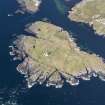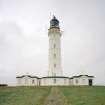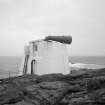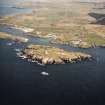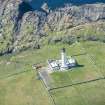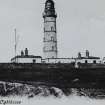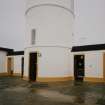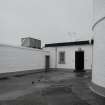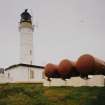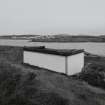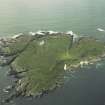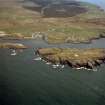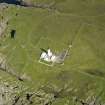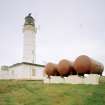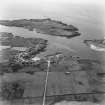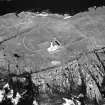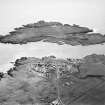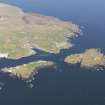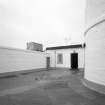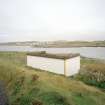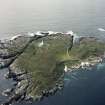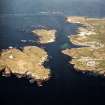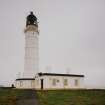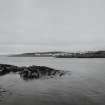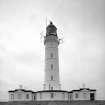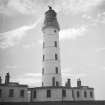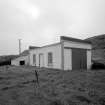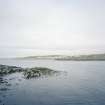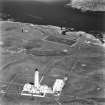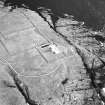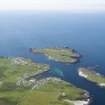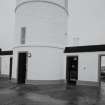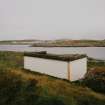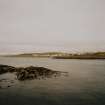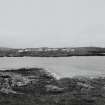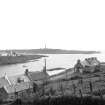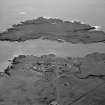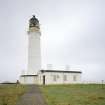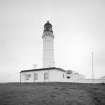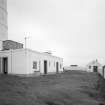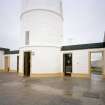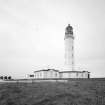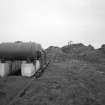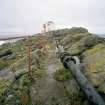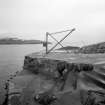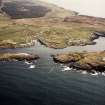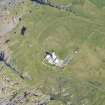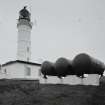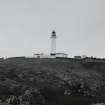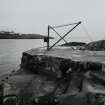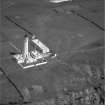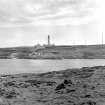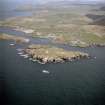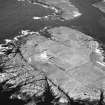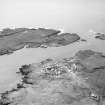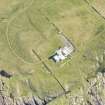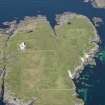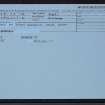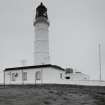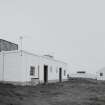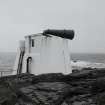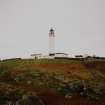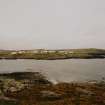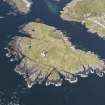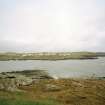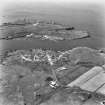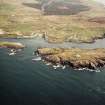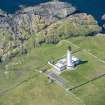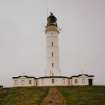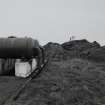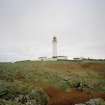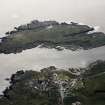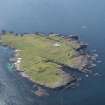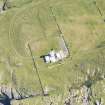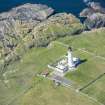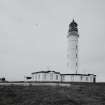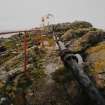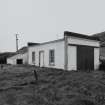Pricing Change
New pricing for orders of material from this site will come into place shortly. Charges for supply of digital images, digitisation on demand, prints and licensing will be altered.
Upcoming Maintenance
Please be advised that this website will undergo scheduled maintenance on the following dates:
Thursday, 30 January: 11:00 AM - 3:00 PM
During these times, some functionality such as image purchasing may be temporarily unavailable. We apologise for any inconvenience this may cause.
Orsay, Rhinns Of Islay Lighthouse
Lighthouse (19th Century) (1825), Lighthouse Keepers House(S) (19th Century), Sundial (19th Century)
Site Name Orsay, Rhinns Of Islay Lighthouse
Classification Lighthouse (19th Century) (1825), Lighthouse Keepers House(S) (19th Century), Sundial (19th Century)
Alternative Name(s) Rinns Of Islay Lighthouse; Orsay Island
Canmore ID 37256
Site Number NR15SE 15
NGR NR 16345 51414
Datum OSGB36 - NGR
Permalink http://canmore.org.uk/site/37256
- Council Argyll And Bute
- Parish Kilchoman
- Former Region Strathclyde
- Former District Argyll And Bute
- Former County Argyll
NR15SE 15 16345 51414
Rinns of Islay Lighthouse
(flashing white) [NAT]
OS (GIS) MasterMap, February 2010.
Not to be confused with Rinns of Islay, Loch Indaal lighthouse (NR 2570 5880), for which see NR25NE 22.
Flanked by 2 Keeper Houses, built in the Georgian style, Rinns of Islay Lighthouse was built in 1825, by the engineer Robert Stevenson. A rubble built tower, it has string courses with 5 stages. Within the lighthouse is a cast-iron turnpike stair. There is also a round-ended vestibule at the ground floor level. The roof is a platform roof. A Dioptric flashing light was installed by Barbier and Bernard, Paris, in 1896. The Keeper Houses are 1 storey rubble structures with flat lead roofs and octagonal chimneys.
(Undated) information in NMRS.
(Name cited as Rinns of Islay Lighthouse, Orsay and location as NR 163 514). Built 1825 by engineer Rober Stevenson. A strikingly graceful 6-storey tower with string courses in line with the window sills. The top storey, below the lantern, is lit by circular windows. The railing round the lanern is of the diamond pattern characteristic of the work of Robert Stevenson. The tower rises from a circular base flanked by (and linked to) single-storey, flat-roofed keepers' houses with octagonal chimney stacks.
J R Hume 1977.
This lighthouse was built in 1825 at a cost of £8000 (by engineer Robert Stevenson and contractor John Gibb of Aberdeen), and incorporated a reflector light which was alternately stationary and revolving; it was electrified in 1978. There was an associated shore station at Bowmore (NR 31 59).
R W Munro 1979.
During October 1999 RCAHMS carried out an extensive photographic survey of Rinns of Islay Lighthouse. This included the lighthouse, foghorn complex, compound, associated buildings, pier and hand crane. This survey was undertaken in order to enhance and augment the holdings of the existing National Monuments Record Scotland.
Visited by RCAHMS (MKO), July 1999.
Field Visit (May 1981)
This lighthouse, which first displayed its light in 1825, is situated a few metres S of the highest point of the offshore island of Orsay, and rises to a lantern 45.7m in height above the high-water level of spring tides (Stevenson). The tower measures 6.15m in diameter over all at the base, where it is partly enclosed by a single-storeyed semicircular storage-annexe. It stands on the NE side of a small oblong courtyard opposite a storehouse and flanked by a symmetrical pair of lightkeepers' houses, each of which has a flat roof, a pedimented NE frontage and two sets of paired octagonal chimney-stacks. The present living-quarters and the machine-room are contained in a large detached range added to the E of the original complex probably a short time after 1900.
The walls throughout are of lime-washed rubble masonry with painted or exposed buff-coloured sandstone dressings. The tower rises with a regular batter through five stages which are demarcated by plain stone bands. The stair-landing above the fifth stage is lit by four circular windows, and the balcony, which received the addition of a porch in the early 20th century, (Munro 1979) is carried on a moulded cornice of plain ogival profile which is repeated around the base of the lantern and the eaves of the associated courtyard pavilions. Much of the framework of the lantern and lozenge-patterned balcony railing appears to belong to the original period of construction, but the lens-mechanism, which itself dated from 1896, was modernised in 1978.(The lightroom clock and a petroleum vapour burner together with spares and mantles are now in the Museum of Islay Life, Port Charlotte.) The chain and weights of the turning-mechanism were formerly contained within the central well of the spiral stone staircase. The stair balustrade is composed of looped cast-iron balusters of cruciform section, and the cast-iron basket grate of a fireplace on the ground floor of the tower bears in relief the symbol and motto of the Northern Lighthouse Board. The basement of the semicircular storage-annexe, which is ceiled with a radial barrel vault, is entered by a substantial two-leaf door and incorporates a high-level loading-hatch in the SW end-wall. The interior of each of the keepers' houses, which exhibit evidence of later modifications, comprises four main rooms grouped around a central flue-bearing spine-wall.
A few metres N of the tower there is a sundial which has a fluted pedestal and abrass dial engraved with the name of the lighthouse and that of the makers, Adie and Son, Edinburgh.
This was the first lighthouse to be erected on Islay by the Commissioners of Northern Lighthouses, apparently following strong pressure from 'the shipping interest'. (Parliamentary Papers 1833) Designed by Robert Stevenson, it was built in 1824-5 by the contractor, John Gibb of Aberdeen, at a total cost of over £8,000, and was the scene of the young Alan Stevenson's first practical experience in lighthouse construction.' It was described by Lord Kelvin in 1879 as one of 'the three best revolving lights in the world'.
R W Munro 1979; RCAHMS 1984, visited May 1981.
Publication Account (1985)
The Rinns of Islay Lighthouse on Orsay island at the western tip of Islay was designed by Robert Stevenson and constructed in 1824-5. The principal features of the lighthouse are the storied tower with the light keepers' houses and a storehouse laid out to form a courtyard. The lighting of a beacon was not always a sufficient guide to mariners, for they often had to be able to differentiate one light from another; and Stevenson created a mechanism for the Rinns ofIslay light that was alternately stationary and revolving, producing what was described as a bright 'flush' of light every twelve seconds 'without those intervals of darkness which characterise other lights on the coast'.
The weights of the mechanism that created the turning of the light were formerly a feature of the central well of the spiral staircase that led to the lightroom. Along with the lights at Buchan Ness and Little Ross Island, at the entrance to Kirkcudbright Bay, Lord Kelvin described the Rinns of Islay as 'undoubtedly the three best revolving lights in the world'. The other main lights on Islay are those ofRuvaal (NR 425791), completed in 1859, MacArthur's Head and Loch Indaal completed in 1861 and 1869.
Pride in the traditions of the Northern Lighthouse Board may be seen in a memorial stone in Kilchoman burial-ground (NR 216632), where there is an evocative representation of the Board's emblem with a commemoration presumably to a member of the family of the assistant keeper of the Rinns of Islay lighthouse in 1845.
Information from ‘Exploring Scotland’s Heritage: Argyll and the Western Isles’, (1985).
Photographic Survey (13 October 1999)
During October 1999 RCAHMS carried out an extensive photographic survey of Rinns of Islay Lighthouse. This included the lighthouse, foghorn complex, compound, associated buildings, pier and hand crane. This survey was undertaken in order to enhance and augment the holdings of the existing National Monuments Record Scotland.
Visited by RCAHMS (MKO), July 1999.























































































